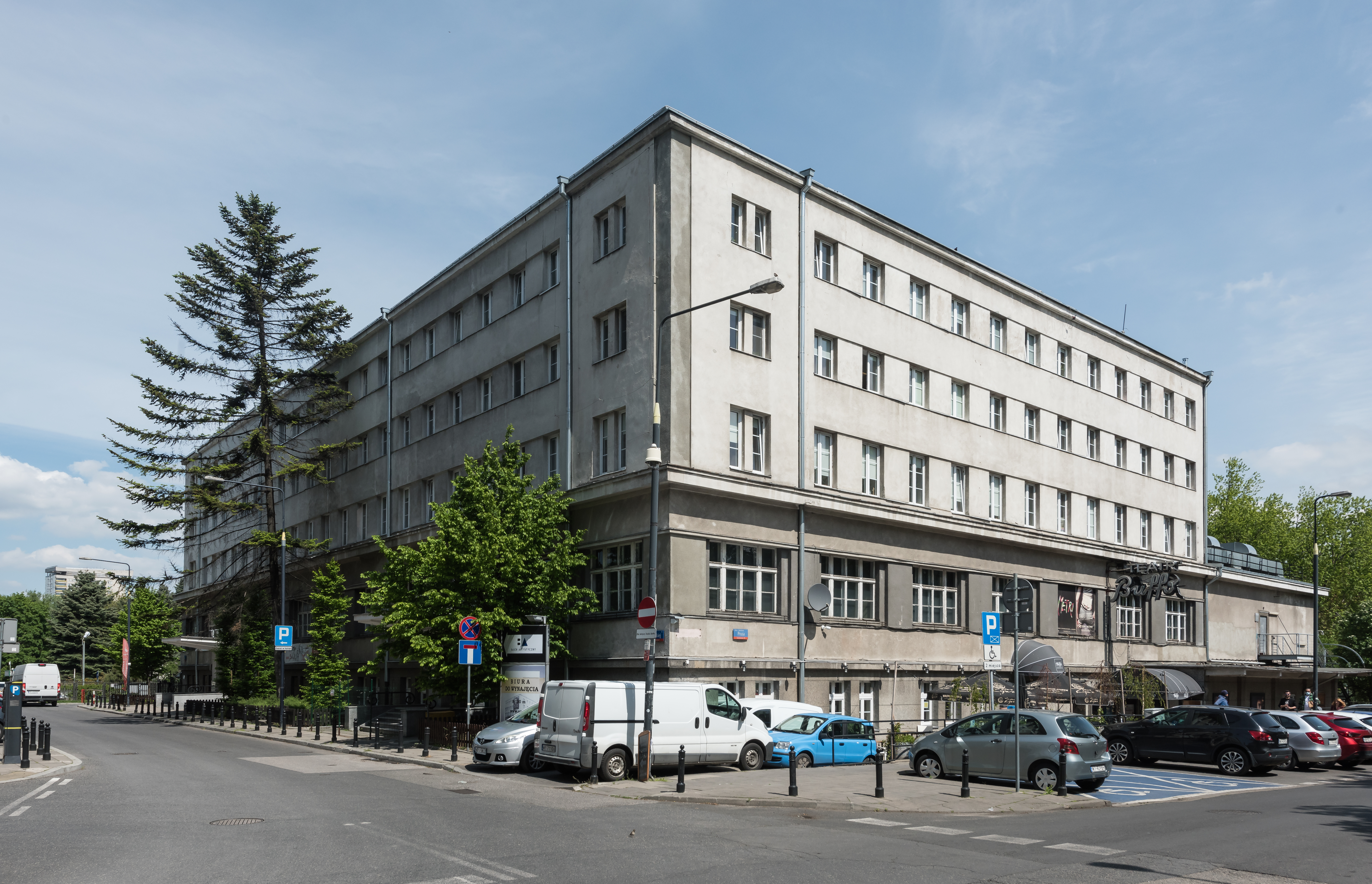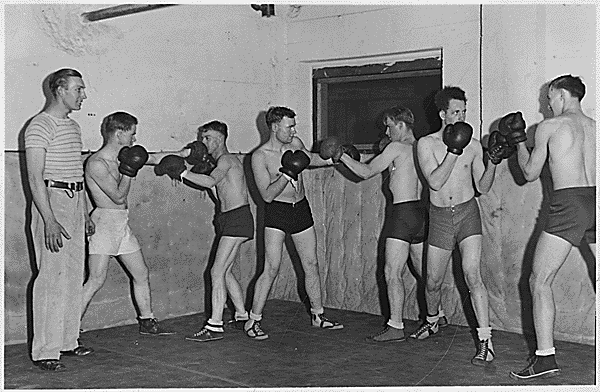|
Polish YMCA
Związek Młodzieży Chrześcijańskiej (Christian Young People Association) – also known as the ''Polish YMCA'' – is a youth social organization, based on the international organizations that YMCA built. It encourages good conduct, charity and education, and activities based on Christian morals. People of both sexes can be members. History The American YMCA came to Poland with General Józef Haller's army during World War I. The main aim was to serve soldiers and prisoners of war. After the war the YMCA continued to work with students, children and poor people. And, with the help of the American YMCA, Poles started to build their own YMCA, which was founded formally in 1923. Before World War II, the YMCA worked in many cities in Poland. Three campsites and four buildings (in Krakow, Lodz, Warsaw and Gdynia) were built with the help of the American YMCA. The YMCA houses had rooms for residents, common rooms, gyms, and swimming pools. Sport and camping played a main role in i ... [...More Info...] [...Related Items...] OR: [Wikipedia] [Google] [Baidu] |
YMCA Lodz
YMCA, sometimes regionally called the Y, is a worldwide youth organization based in Geneva, Switzerland, with more than 64 million beneficiaries in 120 countries. It was founded on 6 June 1844 by George Williams in London, originally as the Young Men's Christian Association, and aims to put Christian values into practice by developing a healthy "body, mind, and spirit". From its inception, it grew rapidly and ultimately became a worldwide movement founded on the principles of muscular Christianity. Local YMCAs deliver projects and services focused on youth development through a wide variety of youth activities, including providing athletic facilities, holding classes for a wide variety of skills, promoting Christianity, and humanitarian work. YMCA is a non-governmental federation, with each independent local YMCA affiliated with its national organization. The national organizations, in turn, are part of both an Area Alliance (Europe, Asia Pacific, the Middle East, A ... [...More Info...] [...Related Items...] OR: [Wikipedia] [Google] [Baidu] |
Józef Haller
Józef Haller von Hallenburg (13 August 1873 – 4 June 1960) was a lieutenant general of the Polish Army, a legionary in the Polish Legions, harcmistrz (the highest Scouting instructor rank in Poland), the president of the Polish Scouting and Guiding Association (ZHP), and a political and social activist. He was the cousin of Stanisław Haller. Haller was born in Jurczyce. He studied at Vienna's Technical Military Academy and subsequently (1895–1906) served with the Austrian Army, resigning after reaching the rank of captain. He supported the paramilitary pro-independence Polish organization Sokół. In 1916, during the First World War, he became commander of the Second Brigade of the Polish Legion, in particular the units which fought against Russia on the Eastern Front. In 1918, in the aftermath of the " Charge at Rarańcza", as commander of the 2nd Polish Auxiliary Corps with the Austrian Army, Haller broke through the Austro-Russian front line to Ukrain ... [...More Info...] [...Related Items...] OR: [Wikipedia] [Google] [Baidu] |
Blue Army (Poland)
The Blue Army (Polish: ''Błękitna Armia''; French: ''Armée bleue''), or Haller's Army, was a Polish military contingent created in France during the latter stages of World War I. The name came from the French-issued blue military uniforms worn by the soldiers. The symbolic term used to describe the troops was subsequently adopted by General Józef Haller von Hallenburg himself to represent all newly organized Polish Legions fighting in western Europe. The army was formed on 4 June 1917, and was made up of Polish volunteers serving alongside allied forces in France during World War I. After fighting on the Western Front, the army was transferred to Poland where it joined other Polish military formations fighting for the return of Poland's independence. The Blue Army played a pivotal role in ensuring Polish victory in the Polish–Ukrainian War, and later Haller's troops took part in Poland's defeat of the advancing Bolshevik forces in the Polish–Soviet War. History B ... [...More Info...] [...Related Items...] OR: [Wikipedia] [Google] [Baidu] |
World War I
World War I (28 July 1914 11 November 1918), often abbreviated as WWI, was List of wars and anthropogenic disasters by death toll, one of the deadliest global conflicts in history. Belligerents included much of Europe, the Russian Empire, the United States, and the Ottoman Empire, with fighting occurring throughout Europe, the Middle East, Africa, the Pacific Ocean, Pacific, and parts of Asia. An estimated 9 million soldiers were killed in combat, plus another 23 million wounded, while 5 million civilians died as a result of military action, hunger, and disease. Millions more died in Genocides in history (World War I through World War II), genocides within the Ottoman Empire and in the Spanish flu, 1918 influenza pandemic, which was exacerbated by the movement of combatants during the war. Prior to 1914, the European great powers were divided between the Triple Entente (comprising French Third Republic, France, Russia, and British Empire, Britain) and the Triple A ... [...More Info...] [...Related Items...] OR: [Wikipedia] [Google] [Baidu] |
World War II
World War II or the Second World War, often abbreviated as WWII or WW2, was a world war that lasted from 1939 to 1945. It involved the World War II by country, vast majority of the world's countries—including all of the great powers—forming two opposing military alliances: the Allies of World War II, Allies and the Axis powers. World War II was a total war that directly involved more than 100 million Military personnel, personnel from more than 30 countries. The major participants in the war threw their entire economic, industrial, and scientific capabilities behind the war effort, blurring the distinction between civilian and military resources. Air warfare of World War II, Aircraft played a major role in the conflict, enabling the strategic bombing of population centres and deploying the Atomic bombings of Hiroshima and Nagasaki, only two nuclear weapons ever used in war. World War II was by far the List of wars by death toll, deadliest conflict in hu ... [...More Info...] [...Related Items...] OR: [Wikipedia] [Google] [Baidu] |
Warsaw
Warsaw ( pl, Warszawa, ), officially the Capital City of Warsaw,, abbreviation: ''m.st. Warszawa'' is the capital and largest city of Poland. The metropolis stands on the River Vistula in east-central Poland, and its population is officially estimated at 1.86 million residents within a greater metropolitan area of 3.1 million residents, which makes Warsaw the 7th most-populous city in the European Union. The city area measures and comprises 18 districts, while the metropolitan area covers . Warsaw is an Alpha global city, a major cultural, political and economic hub, and the country's seat of government. Warsaw traces its origins to a small fishing town in Masovia. The city rose to prominence in the late 16th century, when Sigismund III decided to move the Polish capital and his royal court from Kraków. Warsaw served as the de facto capital of the Polish–Lithuanian Commonwealth until 1795, and subsequently as the seat of Napoleon's Duchy of Warsaw. Th ... [...More Info...] [...Related Items...] OR: [Wikipedia] [Google] [Baidu] |
Gdynia
Gdynia ( ; ; german: Gdingen (currently), (1939–1945); csb, Gdiniô, , , ) is a city in northern Poland and a seaport on the Baltic Sea coast. With a population of 243,918, it is the 12th-largest city in Poland and the second-largest in the Pomeranian Voivodeship after Gdańsk. Gdynia is part of a conurbation with the spa town of Sopot, the city of Gdańsk, and suburban communities, which together form a metropolitan area called the Tricity (''Trójmiasto'') with around 1,000,000 inhabitants. Historically and culturally part of Kashubia and Eastern Pomerania, Gdynia for centuries remained a small fishing village. By the 20th-century it attracted visitors as a seaside resort town. In 1926, Gdynia was granted city rights after which it enjoyed demographic and urban development, with a modernist cityscape. It became a major seaport city of Poland. In 1970, protests in and around Gdynia contributed to the rise of the Solidarity movement in nearby Gdańsk. The port of Gdynia ... [...More Info...] [...Related Items...] OR: [Wikipedia] [Google] [Baidu] |
Władysław Anders
) , birth_name = Władysław Albert Anders , birth_date = , birth_place = Krośniewice-Błonie, Warsaw Governorate, Congress Poland, Russian Empire , death_date = , death_place = London, England, United Kingdom , serviceyears = 1913–1946 , unit = Polish II Corps , battles = First World War Polish–Bolshevik WarSecond World War * Invasion of Poland ** Battle of Tomaszów Lubelski ** Battle of Wladypol * Italian Campaign ** Monte Cassino ** Battle of Ancona ** Battle of Bologna , awards = '' See list below'' , spouse = , relations = , laterwork = Władysław Albert Anders (11 August 1892 – 12 May 1970) was a general in the Polish Army and later in life a politician and prominent member of the Polish government-in-exile in London. Biography Before World War II Anders was born on 11 August 1892 to his father Albert Anders and mother Elizabeth (maiden name Tauchert) in the village of Krośniewice–B� ... [...More Info...] [...Related Items...] OR: [Wikipedia] [Google] [Baidu] |


.png)


